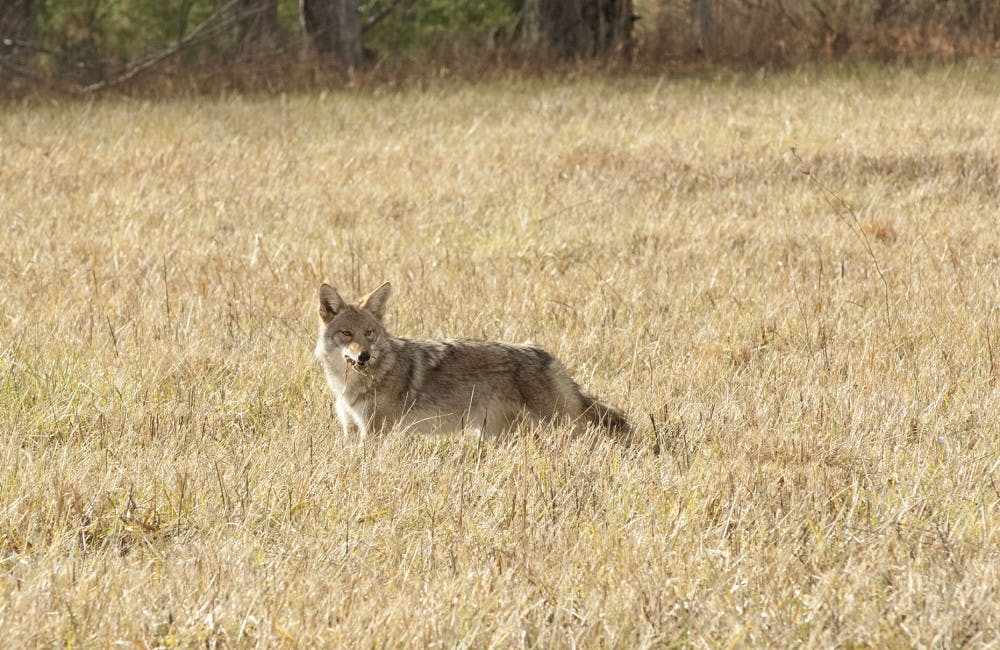As the weather warms up and spring inches closer, there might be increased sightings of copperheads and coyotes, but this is nothing to be alarmed about — it’s only natural.
Jessie Birckhead, a biologist at the NC Wildlife Resources Commission, studies animals that people normally come into contact with in urban areas. Coyotes can be found in all 100 counties of North Carolina and are often seen in urban areas, she said.
“I don’t think people are seeing an increase in the population; what we do see are an increase in sightings during different parts of the year,” Birckhead said. “This time of year it’s common for us to see an increase in sightings, because coyotes are in their breeding season right now.”
According to Birckhead, this results in more sightings because the males are out patrolling their territories and making their presence known. She said she also predicts that sightings will rise again in the summer, when their pups are born and the parents are out searching for food.
Coyotes very rarely bite or attack people, since they are "opportunistic carnivores," said Bob Marotto, director of Orange County Animal Services. People are rarely in harm’s way — but outdoor cats and other small pets might be, he said.
“Often, when there’s problems with them, that’s because they’ve lost their natural fear of people,” Marotto said.
Since people generally don't threaten coyotes, they are losing their natural fear of humans. This has led coyotes to become more attracted to urban areas where there is unsecured garbage and other incentives.
“We want people to frighten coyotes whenever they see them,” Moratto said. “That way they’ll keep their natural fear of people.”
Orange County Animal Services advise people to haze coyotes by walking in large groups, carrying noise-makers or standing tall and yelling until it goes away.



